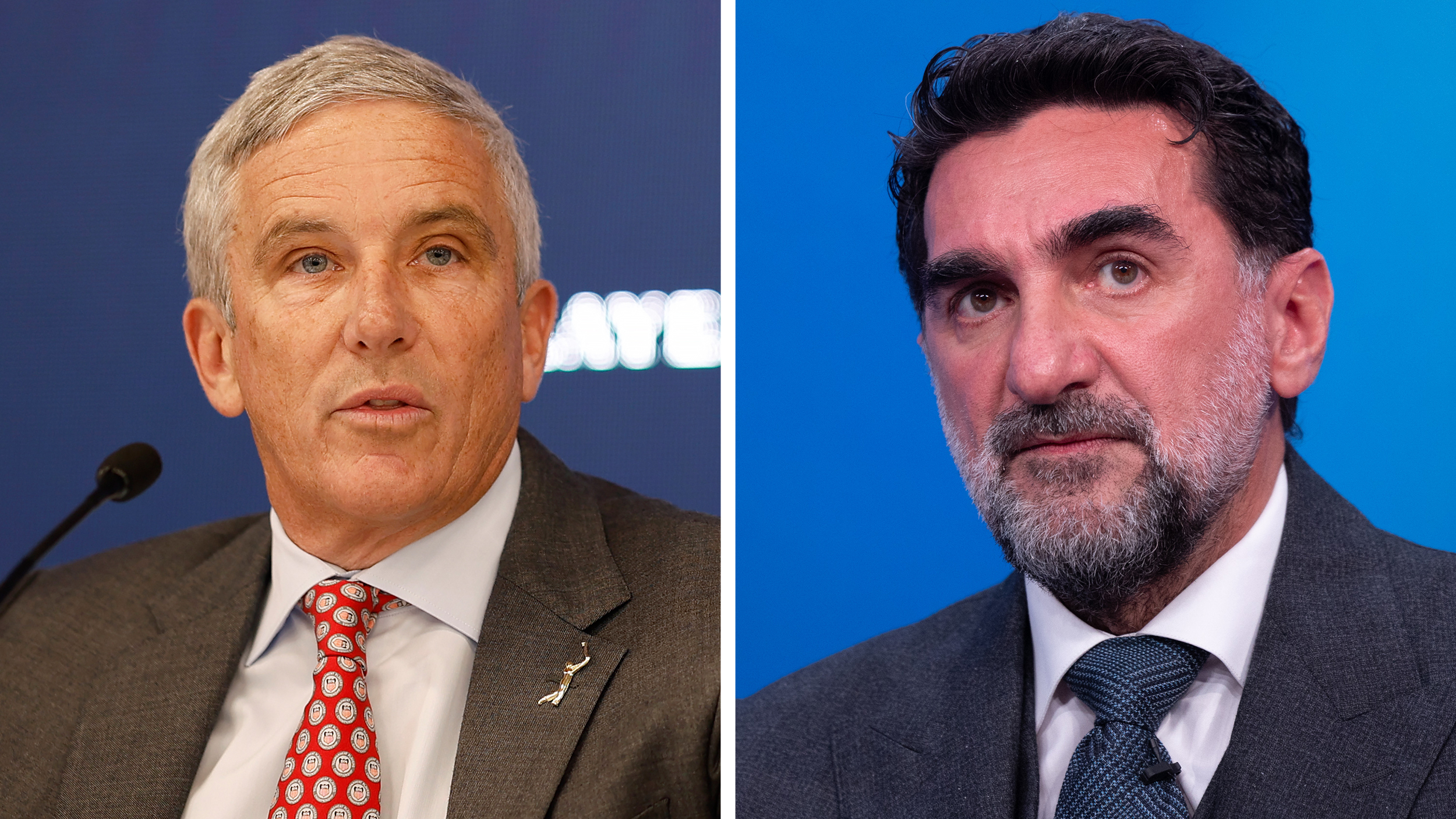
The prevailing feeling when it comes to men’s professional golf is increasingly one of apathy. The players don’t know what’s going on – and, in the case of Adam Scott, are desperate for a resolution one way or another – and both qualitative and quantitative data points to a decline in interest among fans. Are things terminal? Not yet, no, but it’s clear to everyone that ongoing fragmentation is doing neither side any favours.
While most, including executives on both sides, realise some form of olive branch waving is required – indeed, we’re told negotiations between PGA Tour Enterprises (Jay Monahan) and Saudi Arabia’s PIF (Yasir Al-Rumayyan) are ongoing and ‘constructive’ – the path to reconciliation and a mutually beneficial solution is littered with obstacles.
In his most recent update, Monahan wrote to players: “The conversation throughout was constructive and represents an important part of our due diligence process in selecting potential investors for PGA Tour Enterprises. This mirrors the approach we employed earlier this year as we evaluated an investment offer from the Strategic Sports Group.
"During the session, Yasir had a chance to introduce himself to our player directors and talk through his vision, priorities and motivations for investing in professional golf. As we continue these discussions with the PIF, we will keep you updated as much as possible, but please understand that we need to maintain our position of not conducting negotiations in public. To that end, we will provide no further comments to the media at this time.”

Vague wording and no action points… it’s a familiar story. But what impact is this having on the men’s professional golfing landscape? My conversations with people both inside and outside the industry have mostly centred around increased disinterestedness. Some data points back this up, too.
After the Players Championship, it was revealed that Sunday viewership was down 17% year-on-year in America (from 4.1 million to 3.5 million). That was the lowest final-round figure from the past ten years, excluding 2022’s event, which finished on a Monday due to inclement weather. The Arnold Palmer Invitational, Genesis Invitational and AT&T Pebble Beach Pro-Am – the PGA Tour’s early-season ‘signature’ events – all posted viewership declines, too.
Are people watching more LIV Golf, you might ask? Well, it’s hard to say without year-on-year data, but the final round of LIV Golf Mayakoba drew 423,000 viewers in the USA. For context, the final round of the Genesis received 3.2 million viewers, roughly seven times more. And LIV Mayakoba was up against an abandoned final round at Pebble Beach. In short, neither circuit is setting the world alight with their viewership figures.
We asked our X followers if they’re more or less interested in professional golf than at the start of 2022. Some 75% answered less, with 25% responding more (it’s important to note this poll was for the professional game as a whole, not just the men).
We also asked a follow-up question: “If you’re less interested in professional golf than you were at the start of 2022, what is the main reason?” The votes were: the rich getting richer (17%), fragmentation of the game (42%), bored of the politics (35%) and other (6%). Ed Huston’s (@eddhuston) pithy reply was ‘all of the above’. The quality of the television broadcast came in for some flak, too.

My colleague Barry Plummer has written about the PGA Tour television experience, and there’s no question the politics and the strength of fields are putting many people off. The irony here is that, anecdotally at least, it seems as if what the majority of golf fans want from a viewing experience is what was in place before LIV (plus improvements to the quality of the broadcast).
The introduction of LIV Golf has stretched golf’s top talent out like a pizza dough. There are world-class players on both sides of the divide, but not enough to really excite without a strong supporting cast. On LIV, the next tier down is filled with players who are well past their best; on the PGA Tour, it’s the journeyman, new names and rank-and-file players who often fail to move the needle.
The PGA Tour’s response has been an effort to remove these second-tier players from the biggest and most lucrative events, thereby creating the oft-cited perfect scenario – the top players playing against each other more often. Because the best players on the PGA Tour have all turned down tens of millions of dollars to join LIV Golf (and more in some cases) they believe they’re entitled to a larger share of the prize pools on the PGA Tour, especially as they generate the most interest in the product.
As such, they’ve convinced themselves everyone wants to watch them the whole time. They kind of do… but the other guys are an important part of the equation too – almost like the cheese and relish on a hamburger or the tomato soup served with the grilled cheese sandwich.
Your Jake Knapps, Peter Malnatis and Matthieu Pavons provide something the top guys can’t – variety, relatability (see Malnati’s emotional victory speech at the Valspar) and a point of difference. Plus, they contextualise the ability and achievements of the best. For a compelling event, you need big fields with stars and journeymen, thereby maximising the potential for drama.

But the PGA Tour seems to want to go the other way – no doubt a product of the influence of figureheads like Rory McIlroy. When you have a smaller pool of top talent and those guys struggle for form, as they have done of late, damp squibs are a real risk. Just look at the Arnold Palmer Invitational.
The tournaments I’ve traditionally enjoyed the most are the US Open, PGA Championship and Players Championship. None of those are closed shops and they provide the most potential for excitement. If the best players rise to the top, then great; if outsiders mix with the big guns on the leaderboard, that’s great too; and if a new name or journeyman comes from nowhere, it creates memorable television, like Michael Block last year.
As it stands, LIV Golf is failing to capture the imagination of golf fans and the PGA Tour isn’t faring much better – the fragmentation is affecting both sides, but perhaps hitting the latter more noticeably. Viewership declines, sponsors pulling out and growing unrest among the membership aren’t good signs.
And, on the LIV side, comical sums of money being paid to players who, quite frankly, don’t deserve it, constant bickering over world ranking points, the limited interest in the team element and an inability to shake the word ‘exhibitionism’ are tangibly impacting growth. The ongoing lack of clarity is helping no one.

It’s been obvious for some time that some form of re-unification is absolutely vital. But will either side recognise the bigger picture and back down? The Saudis, with their endless pots of money, won’t walk off quietly into the night and the PGA Tour has just secured $3 billion in funding from Strategic Sports group.
I’m increasingly concerned things won’t be resolved for the start of the 2025 season and the fragmentation will continue. Contracts have already been signed and unravelling everything will be a legal and logistical nightmare. But unification simply has to happen. The longer this goes on, the more fans will abandon the professional game. It’s a process that’s already started.
Avarice, greed and thirst for power is rotting men’s pro golf from the inside. But are those in the boardrooms capable of casting aside those influences and prioritising the bigger picture? It doesn’t look like it from where I’m sitting. The phrase ‘you don’t know what you have until it’s gone’ feels very apt.






